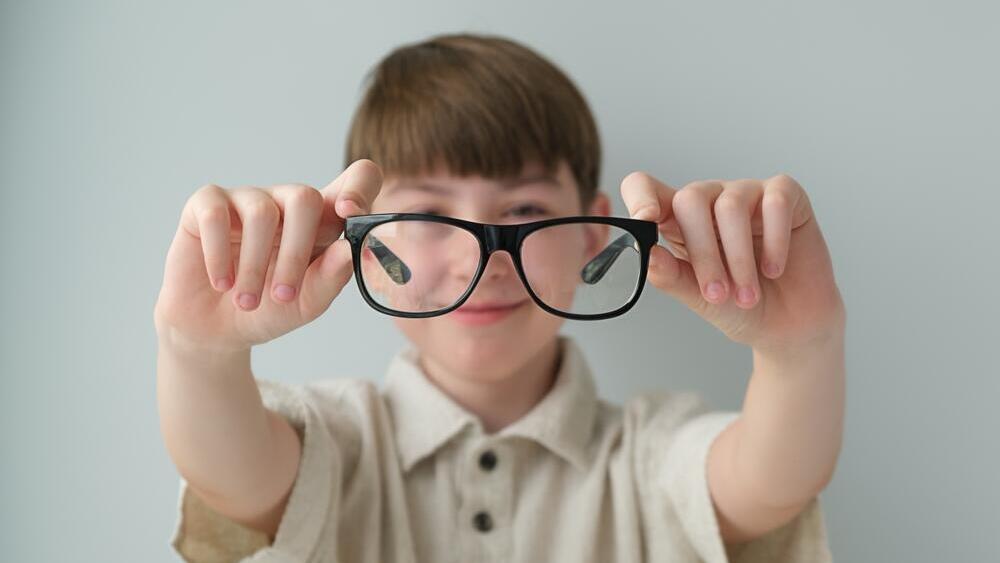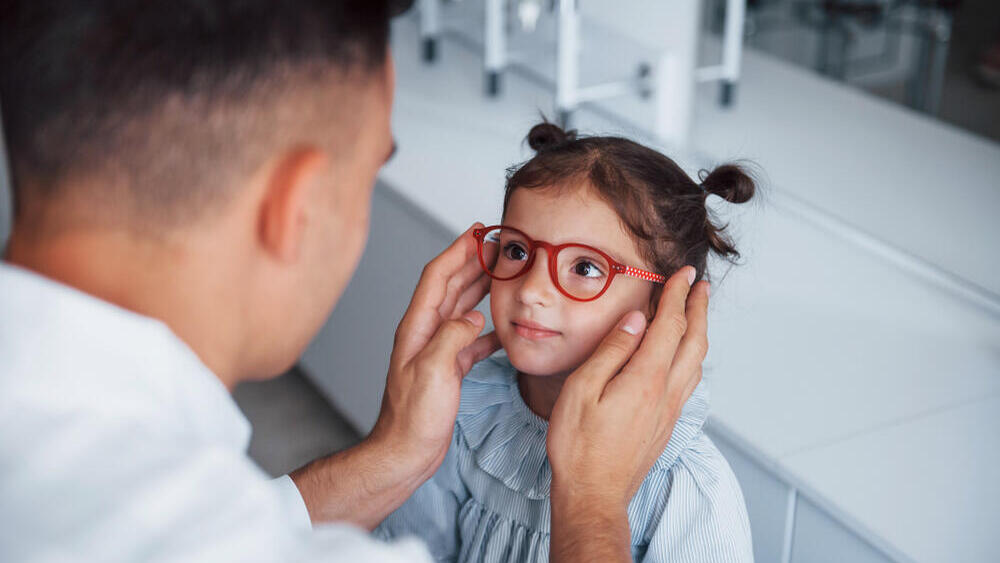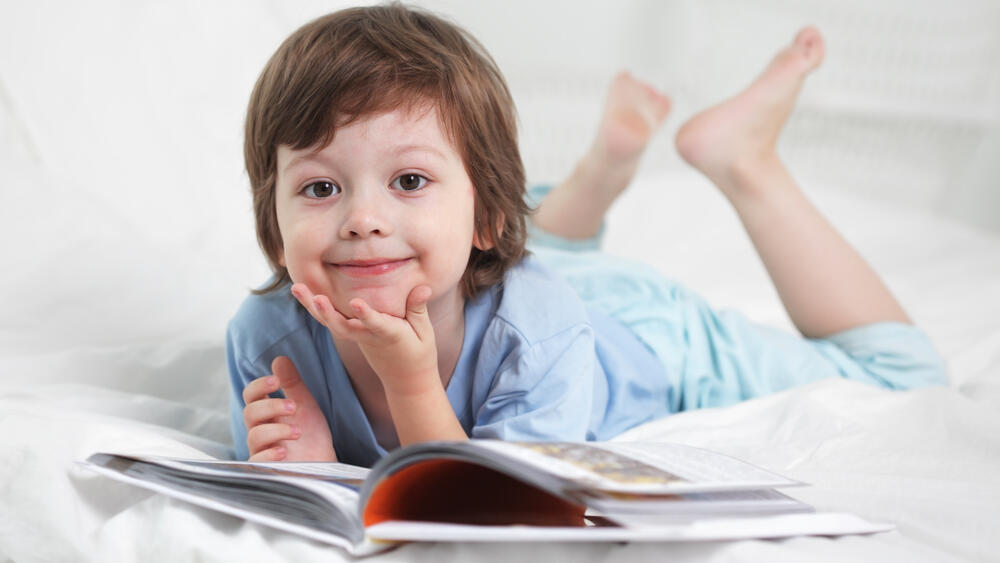Getting your Trinity Audio player ready...
Children's vision around the globe is steadily deteriorating and one in three now suffer from myopia (nearsightedness), according to a study published in the British Journal of Ophthalmology.
The study warns that myopia is a growing global health concern expected to affect millions more children by 2050. Researchers also noted that COVID-19 lockdowns hurt children’s eyesight, because they spent more time in front of screens and less time outdoors.
“The most common cause of myopia worldwide is genetics. A child born to parents with myopia is more likely to develop it too. The second cause is environmental—children who spend a lot of time reading or looking at screens up close may develop myopia at a very young age," Dr. Mohammed Atamna, an ophthalmology specialist at Maccabi Healthcare Services said. "For example, in the ultra-Orthodox community, many children and adults are nearsighted because they strain their eyes reading books from a very young age.”
He said more children use glasses because they are tested more frequently than was common 30 years ago. "Nowadays, parents are diligent about attending vision and hearing tests, vaccinations, and more. In the past, people only started wearing glasses at university when they couldn’t see the board.”
The impact of COVID-19 on eyesight
The study analyzed data from over five million children and adolescents across 50 countries, showing that the prevalence of myopia tripled from 1990 to 2023, rising to 36%. The increase was particularly noticeable after the COVID-19 pandemic, researchers noted.
During the pandemic lockdowns, when millions of people were forced to stay indoors for extended periods, children's vision deteriorated. “A large body of evidence points to a potential link between the pandemic and accelerated vision decline among young people,” the researchers wrote.
Dr. Atamna agreed, saying, “It doesn't surprise me at all that there's a connection between COVID-19 and myopia. This reinforces earlier studies showing that prolonged indoor time contributes to vision problems. When children spend more time indoors, they naturally gravitate towards screens like iPads, phones, or TVs. They’re also less exposed to natural daylight, which limits their range of vision.”
Are screens the real epidemic?
According to the study, the highest rates of myopia are in Asia: 85% of children in Japan and 73% in South Korea are nearsighted, with more than 40% in China and Russia. In contrast, only about 1% of children in Paraguay and Uganda suffer from vision issues. In the UK, Ireland, and the U.S., the rate is around 15%.
4 View gallery


Focusing on books and screens at an earliy age strains the eye muscles and leads to vision problems
(Photo: Shutterstock)
Myopia typically begins in primary school and worsens until the eye stops growing, usually around age 20. Various factors make the condition more likely, including living in East Asia, where children begin formal education as early as age two, particularly in places like Singapore and Hong Kong. This early start means more time focusing on books and screens, which strains the eye muscles and leads to vision problems. In Africa, where schooling typically begins between ages six and eight, myopia is seven times less common than in Asia.
Dr. Atamna noted that in Israel, the situation is more complex. “We are a mosaic of cultures—Ashkenazi, Sephardi, and various other ethnic groups from different parts of the world—so it’s difficult to pinpoint research data as precisely as in countries like China or Japan. What’s clear is that screen use at home definitely impacts children's vision here.”
The study also found that girls are more prone to myopia than boys, a trend researchers attribute to girls spending less time outdoors during adolescence. Dr. Atamna stressed the importance of outdoor activities: “The more a child plays outside, the more they are exposed to a wider range of vision, allowing their eyes to grow healthily.” Girls also tend to enter puberty earlier, leading to earlier onset of myopia.
When it comes to screen use and eye health, Dr. Atamna warned, “Screen time must be carefully monitored and limited. Studies show that children under three should not be exposed to screens at all. Excessive screen time can cause myopia, dry eyes, and even eye strain leading to squinting. There’s no doubt that playing a virtual puzzle on an iPad is not the same as doing a real puzzle. With hands-on activities, children engage their muscles and senses more effectively.”
Dr. Atamna’s recommendations to protect your child’s vision:
Time outdoors: Children should spend at least two hours outside daily, especially between the ages of seven and nine. Natural sunlight, physical activity, and focusing on distant objects all promote healthy vision development.
Regular eye exams: Dr. Atamna emphasized, “The global recommendations are eye exams for children at birth, age one, three, and six—these are the key growth years for the eyes.”
Limit screen time: “I always tell parents—not to ban screens but to limit them. It's okay for children to use screens, but not from seven in the morning to seven at night. It must be controlled and limited,” said Dr. Atamna.
Proper nutrition: “Nutrition is crucial, especially between ages zero and six,” Dr. Atamna explained. “Foods like avocados, cottage cheese, fish, eggs, meat, and carrots, rich in vitamins A, B6, B12, and iron, are essential for healthy eye development.”
Recognizing the signs of vision problems
Dr. Atamna warned that most cases of vision problems go unnoticed by parents. He advised looking for signs like holding objects close to the eyes, difficulty following instructions, developmental delays, learning issues, or hyperactivity. He shared an example: “I had a case where a mother thought her child was holding things close because he couldn’t see well. After multiple eye exams, I found no vision problems. It turned out the child had hearing loss and was bringing the iPad close to his face to hear better.”
“Ultimately, ophthalmologists recommend continuing to read books, reducing screen time, and increasing outdoor play. And when reading, make sure the lighting is bright—preferably white light, closest to natural sunlight. Reading in a well-lit room with open or clear windows is best.” With growing awareness and expert recommendations, there is hope that we can improve eye health in the next generation and reduce the prevalence of myopia in our children.




